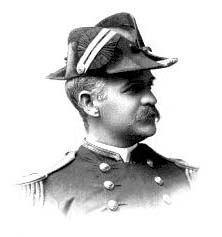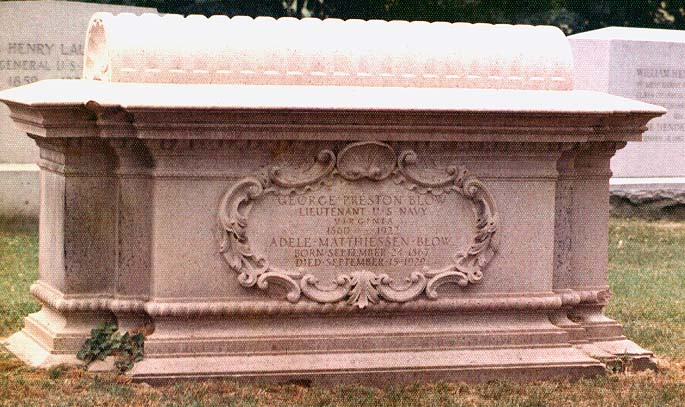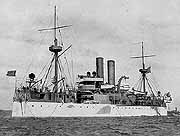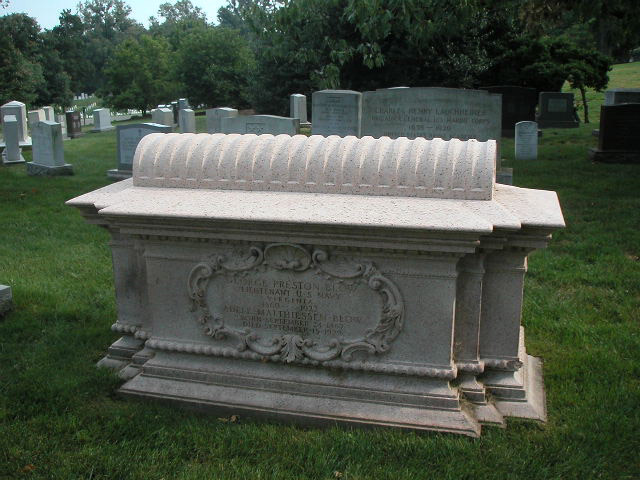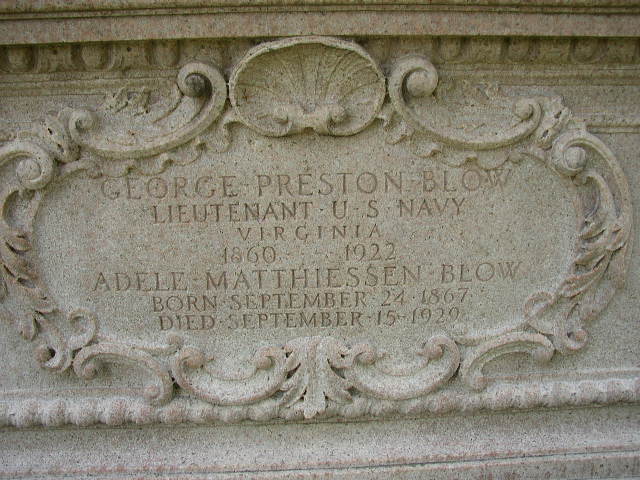Shortly after his graduation he was a member of the volunteer crew of the USS Pinta on its controversial trip from Norfolk to Alaska via Cape Horn in 1883. He later served on the USS Pensacola under Captain George Dewey in the Mediterranean. In 1887 he was appointed navigation officer for the attempts to raise the treasure ship DeBraak in Delaware Bay.
In 1890 as aide to Admiral Brown, he was detailed to King Kalakaua of Hawaii during the king's fatal visit to California and was later knighted by Queen Liliuokalani (He was not authorized by Congress to accept the honor until March, 1897. The decoration was then forwarded to him by the Navy Department and was lost on the Maine - along with everything he owned onboard). In 1893 he married Adele Matthiessen of LaSalle, Illinois.
He was assigned as a Lieutenant to the USS Texas in 1895 and USS Maine in 1896 at the age of 36. Surviving the explosion on February 15, 1898, he served during the Spanish American War in which he held the rank of Commander and later of Captain. He was in command of the USS Potomac which assisted in raising the Spanish Flagship Infanta Maria Theresa, sunk in the battle of Santiago bay, and later commanded the U.S.S. Vulcan, which was towing the Spanish warship to the United States when it was lost in a gale near Cat Island in the Bahamas. During his naval career he also established the U.S. Hydrographic bureaus in Cleveland and Chicago and was credited with inventing several naval devices including the depth-charge.
Following his resignation from the Navy in 1900, he served, until his retirement in 1920, as general manager of the estate of his father-in-law, Frederick W. Matthiessen at LaSalle, Illinois. In this connection he became president of the Western Clock Company (Westclox), the Matthiessen & Hegeler Zinc Company, and the LaSalle Machine and Tool Company. In 1914 he purchased and restored to it's original state the Nelson house at Yorktown, Virginia. He was a founder and director of the International Chamber of Commerce, serving as a delegate to its organizational meeting in Boston (1918) and to its conventions in Paris (1919) and London (1920). He championed the metric system and Esperanto as a universal commercial language.
He was one of the pioneers and government representatives in proposing the deep-waterway from the Great Lakes to the St. Lawrence, and was a member of the Great Lakes-St. Lawrence Tidewater Association.
He died in Washington DC in 1922 survived by his wife and four children and was buried with the Naval Academy Class of 1881 in Arlington National Cemetery.
He was a member of many clubs and associations including the Society of the Cincinnati, Society of Colonial Wars and The Virginia Historical Society.
Shortly after his graduation he was a member of the volunteer crew of the USS Pinta on its controversial trip from Norfolk to Alaska via Cape Horn in 1883. He later served on the USS Pensacola under Captain George Dewey in the Mediterranean. In 1887 he was appointed navigation officer for the attempts to raise the treasure ship DeBraak in Delaware Bay.
In 1890 as aide to Admiral Brown, he was detailed to King Kalakaua of Hawaii during the king's fatal visit to California and was later knighted by Queen Liliuokalani (He was not authorized by Congress to accept the honor until March, 1897. The decoration was then forwarded to him by the Navy Department and was lost on the Maine - along with everything he owned onboard). In 1893 he married Adele Matthiessen of LaSalle, Illinois.
He was assigned as a Lieutenant to the USS Texas in 1895 and USS Maine in 1896 at the age of 36. Surviving the explosion on February 15, 1898, he served during the Spanish American War in which he held the rank of Commander and later of Captain. He was in command of the USS Potomac which assisted in raising the Spanish Flagship Infanta Maria Theresa, sunk in the battle of Santiago bay, and later commanded the U.S.S. Vulcan, which was towing the Spanish warship to the United States when it was lost in a gale near Cat Island in the Bahamas. During his naval career he also established the U.S. Hydrographic bureaus in Cleveland and Chicago and was credited with inventing several naval devices including the depth-charge.
Following his resignation from the Navy in 1900, he served, until his retirement in 1920, as general manager of the estate of his father-in-law, Frederick W. Matthiessen at LaSalle, Illinois. In this connection he became president of the Western Clock Company (Westclox), the Matthiessen & Hegeler Zinc Company, and the LaSalle Machine and Tool Company. In 1914 he purchased and restored to it's original state the Nelson house at Yorktown, Virginia. He was a founder and director of the International Chamber of Commerce, serving as a delegate to its organizational meeting in Boston (1918) and to its conventions in Paris (1919) and London (1920). He championed the metric system and Esperanto as a universal commercial language.
He was one of the pioneers and government representatives in proposing the deep-waterway from the Great Lakes to the St. Lawrence, and was a member of the Great Lakes-St. Lawrence Tidewater Association.
He died in Washington DC in 1922 survived by his wife and four children and was buried with the Naval Academy Class of 1881 in Arlington National Cemetery.
He was a member of many clubs and associations including the Society of the Cincinnati, Society of Colonial Wars and The Virginia Historical Society.
